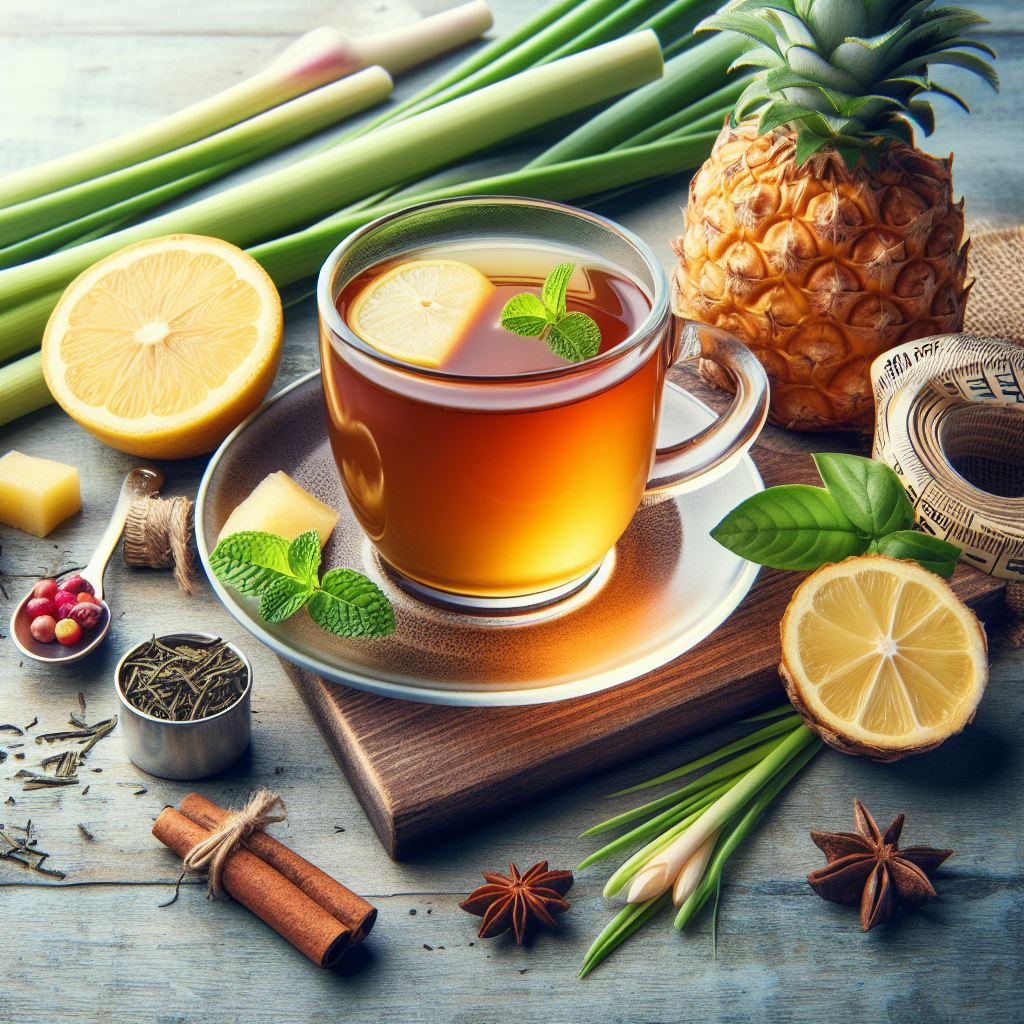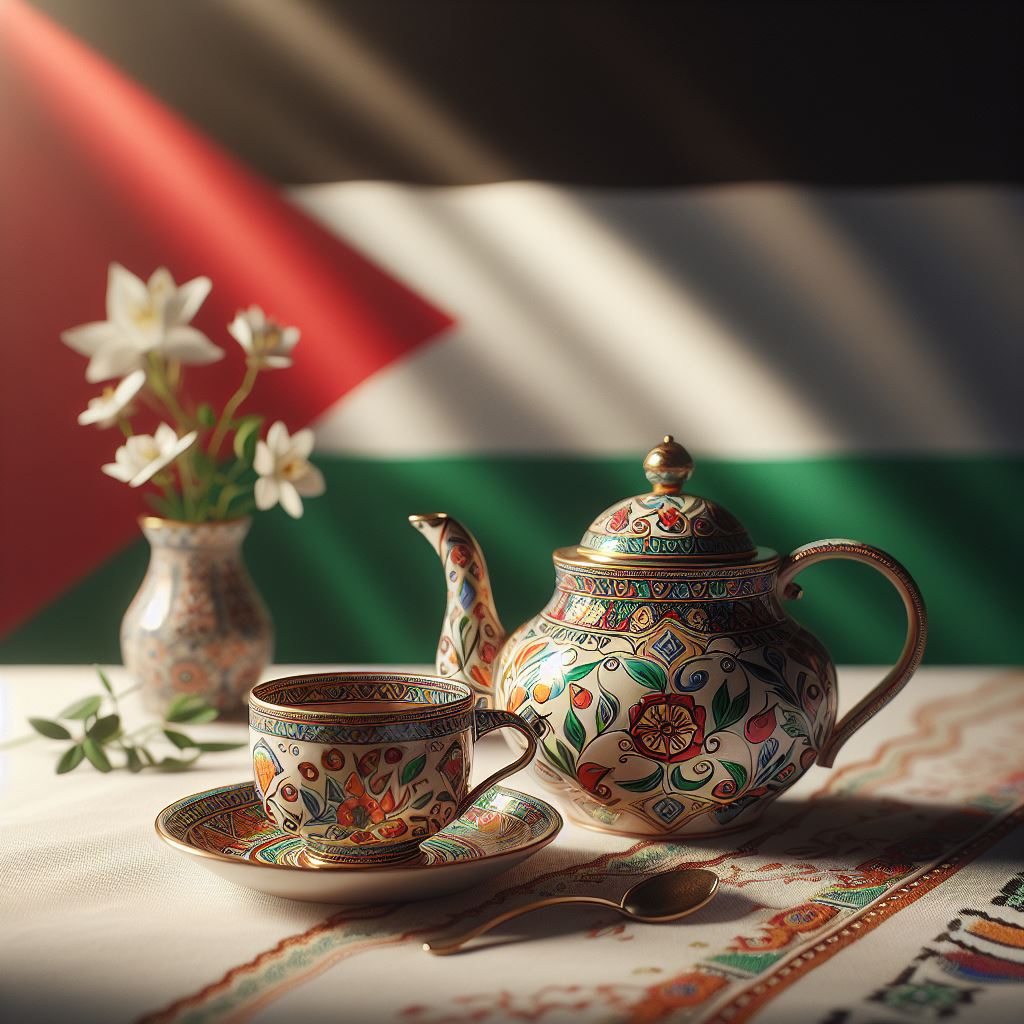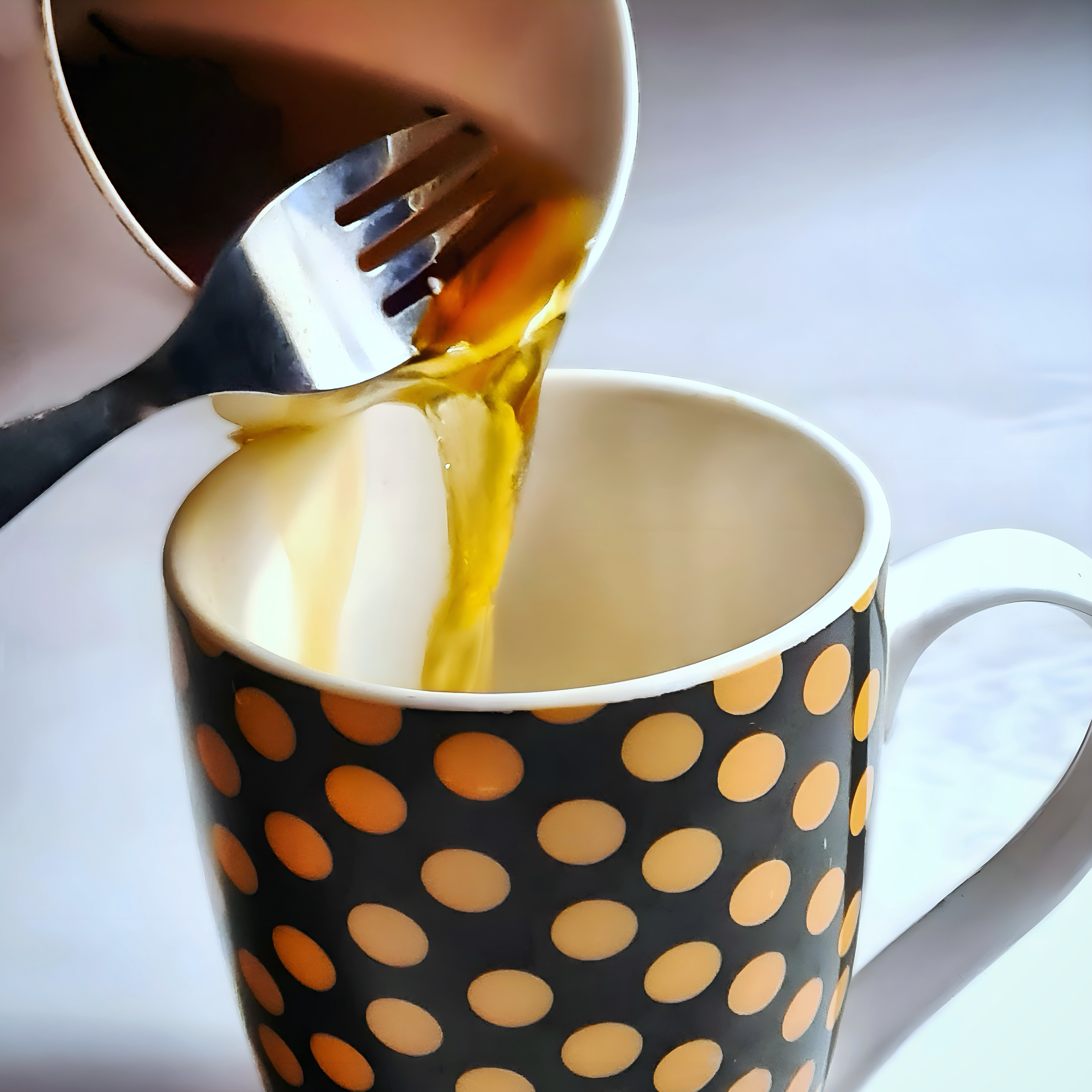Have you ever wondered what makes teh tarik, or Malaysian pulled tea, so special and delicious? If you have ever visited Malaysia, you would have noticed that teh tarik is everywhere. From roadside stalls to fancy restaurants, teh tarik is a staple drink that is enjoyed by people from all walks of life. It is not just a beverage, but a cultural icon and a symbol of Malaysian identity.
Teh tarik is more than just tea with milk. It is a unique concoction that involves a skillful technique of pulling the tea back and forth between two containers, creating a thick layer of froth on top. The result is a smooth, creamy, and aromatic tea that is best served hot and sweet.
In this blog post, we will unravel the art of teh tarik and explore its origins, history, ingredients, variations, culture, and health benefits. Whether you are a tea lover or a curious traveler, you will discover the secrets behind this beloved Malaysian drink and learn how to make it at home.

The Origins and History of Teh Tarik
Teh tarik has a rich and fascinating history that dates back to the colonial era of Malaysia. It is believed that Malaysian pulled tea was introduced by the Indian Muslim immigrants who came to Malaysia as traders and workers during the British rule. They brought with them their culture and cuisine, including their love for tea.
The Indian Muslims, also known as mamaks, set up stalls and shops that served tea and snacks to the local population. They used black tea leaves and condensed milk, which were cheap and readily available, to make their tea. They also developed a unique way of preparing the tea. This was done by pouring the tea back and forth between two metal cups, creating a frothy texture and aeration. This technique also helped to cool down the tea and mix the ingredients well.
The name teh tarik literally means “pulled tea” in Malay, referring to the pulling action of the tea maker. The term was coined by the locals who were amazed by the spectacle of the tea being pulled. The mamaks soon became famous for their teh tarik and attracted customers from all ethnic groups and backgrounds.
Teh tarik gradually became a popular and ubiquitous drink in Malaysia, especially after the independence in 1957. It was seen as a symbol of unity and harmony among the diverse communities in the country. It also became a part of the Malaysian identity and heritage, as well as a source of pride and patriotism.
Today, teh tarik is widely regarded as the national drink of Malaysia. It is enjoyed by millions of Malaysians every day, regardless of age, gender, religion, or social status.
The Art of Teh Tarik

Making Malaysian pulled tea is not as easy as it looks. It requires a lot of practice, patience, and precision. The art of teh tarik involves several steps and factors that affect the quality and taste of the tea.
The first step is to brew the tea. The tea maker uses loose black tea leaves, preferably of high quality and strong flavor. The tea is boiled in water for several minutes, then strained and transferred to a metal cup or pot.
The second step is to add the condensed milk. The tea maker pours a generous amount of condensed milk into the tea, creating a milky and sweet mixture. The condensed milk also gives the tea its distinctive color and aroma.
The third step is to pull the tea. This is the most crucial and challenging step of teh tarik. The tea maker holds two metal cups or pots, one containing the tea and milk mixture, and the other empty. He/she then pours the tea from one cup to the other, stretching his arms as far as possible, and repeats the process several times. The tea travels in a long and thin stream between the cups, creating a smooth and frothy texture. The tea maker also adjusts the speed, distance, and angle of the pouring to control the temperature, consistency, and flavor of the tea.
The final step is to serve the tea. The tea maker pours the tea into a glass or a mug, leaving a thick layer of foam on top. He then sprinkles some tea leaves or spices on the foam for decoration and aroma. The tea is ready to be enjoyed by the customer, who can appreciate the skill and artistry of the tea maker.
Here is a simple video demonstration of how to make teh tarik at home:
The art of teh tarik is not only a way of making tea, but also a way of expressing oneself and entertaining others. Some tea makers perform tricks and stunts while pulling the tea. For example, spinning, tossing, or juggling the cups, or making shapes and patterns with the tea stream. These performances are often accompanied by music and cheers from the audience, creating a lively and festive atmosphere.
There are also competitions and festivals dedicated to the art of teh tarik, where tea makers showcase their skills and creativity. Some of the criteria for judging include the taste, texture, color, aroma, and presentation of the tea. Not only that, the style, speed, and difficulty of the pulling technique. The winners are awarded with prizes and recognition, as well as the honor and pride of being the best teh tarik makers in the country!
Ingredients and Variations
The basic ingredients of teh tarik are black tea leaves and condensed milk. However, there are many variations and adaptations of teh tarik that use different types of tea, milk, sweeteners, and spices. Here are some of the common and popular variations of teh tarik:
1. Teh halia:
This is teh tarik with ginger, which adds a spicy and warming flavor to the tea. Ginger is also known for its health benefits, such as improving digestion and immunity. To make teh halia, the tea maker boils fresh ginger slices or ginger powder with the tea leaves. They then add condensed milk and pulls the tea as usual.
2. Teh tarik kurang manis:
This is teh tarik with less sugar, which is preferred by some customers who want to reduce their sugar intake or enjoy a more bitter taste. To make teh tarik kurang manis, the tea maker uses less condensed milk or replaces it with evaporated milk, which has less sugar content. He then pulls the tea as usual, but with less force and distance. This avoids losing too much heat and flavor.
3. Teh O:
This is teh tarik without milk, which is also known as black tea or plain tea. It is usually served with sugar or honey, and sometimes with lemon or lime. To make teh o, the tea maker brews the tea leaves and strains them into a cup or pot. He then pulls the tea as usual, but with more force and distance, to create more aeration and cooling.
4. Teh C:
This is teh tarik with evaporated milk instead of condensed milk, which gives the tea a creamier and richer texture and taste. It is also known as teh susu or milk tea. To make teh C, the tea maker brews the tea leaves and strains them into a cup or pot. He then adds evaporated milk and sugar, and pulls the tea as usual.
5. Teh C peng:
This is teh C with ice, which is also known as iced milk tea or teh ais. It is a refreshing and cooling drink that is popular in hot and humid weather. To make teh C peng, the tea maker brews the tea leaves and strains them into a cup or pot. He then adds evaporated milk and sugar, and pulls the tea as usual. He then pours the tea into a glass filled with ice cubes, and serves it with a straw.
There are also regional and local variations of teh tarik that use different types of tea leaves. For example, green tea, jasmine tea, or herbal tea, or different types of milk, such as coconut milk, soy milk, or almond milk. Some of these variations are influenced by the cuisines and cultures of neighboring countries, such as Thailand, Indonesia, or Singapore.
Teh Tarik Culture and Social Gatherings

Teh tarik is not only a drink, but also a culture and a lifestyle in Malaysia. It is a common and essential part of social gatherings and daily life, especially among the Malay and Indian communities.
One of the most prominent places where teh tarik is consumed and celebrated is the mamak stall. The mamak stall is a type of street food vendor that serves a variety of dishes and drinks. Popular Malaysian choices, such as roti canai, nasi lemak, mee goreng, and of course, teh tarik. These stalls are usually open 24 hours, seven days a week, catering to customers from all walks of life.
The mamak stall is more than just a place to eat and drink. It is also a place to socialize, relax, and have fun. People go to the mamak stall to meet their friends, family, colleagues, or neighbors. Chatting about anything and everything, from politics and sports to gossip and jokes. The mamak stall is also a place to watch live events, such as football matches, concerts, or news, on large screens or TVs. The mamak stall is a lively and vibrant place, where laughter, cheers, and debates fill the air.
Teh tarik is the perfect drink to accompany these social activities, as it is warm, sweet, and comforting. It also helps to stimulate the conversation and the mood, as well as to quench the thirst and hunger. The Malaysian pulled tea is often ordered in large quantities and shared among the group, creating a sense of camaraderie and friendship. It’s also a sign of hospitality and generosity, as it is often offered to guests and visitors as a gesture of welcome and respect.
Health Benefits and Tea Culture
Teh tarik may seem like a simple and indulgent drink, but it also has some potential health benefits that may surprise you. Tea, in general, is known for its antioxidant properties. This alone can help protect the body from free radicals and oxidative stress. Tea can also help to lower blood pressure, cholesterol, and blood sugar levels, as well as to improve digestion, immunity, and metabolism.
Teh tarik, in particular, may have some additional benefits, such as:
- Enhancing mood and mental performance: The caffeine and theanine in tea can help to boost the mood and the cognitive functions. For example, alertness, attention, memory, and creativity. The pulling technique can also help to increase the oxygen and the aroma in the tea. This can further enhance the sensory and mental experience.
- Relieving stress and anxiety: The warm and sweet taste of Malaysian pulled tea can help to soothe the nerves and the mind, as well as to induce a sense of relaxation and comfort. The social aspect can also help to reduce stress and anxiety. This can provide a support network and a coping mechanism.
- Hydrating and nourishing the body: The water and the milk in teh tarik can help to hydrate and nourish the body, as well as to provide some essential nutrients, such as calcium, protein, and vitamin B. The milk can also help to balance the acidity and the bitterness of the tea, as well as to prevent staining of the teeth.
Of course, teh tarik should be consumed in moderation, as it can also have some drawbacks, such as:
- Increasing calorie and sugar intake: The condensed milk and the sugar in teh tarik can add a lot of calories and sugar to the diet. This can lead to weight gain, diabetes, and other health problems. Therefore, it is advisable to limit the consumption, or to opt for less sweet or sugar-free versions, such as teh tarik kurang manis or teh C.
- Interfering with sleep and medication: The caffeine in teh tarik can interfere with the sleep quality and quantity, especially if consumed late at night or before bedtime. The caffeine can also interact with some medications, such as antidepressants, blood thinners, or antibiotics, and cause adverse effects. Therefore, it is advisable to avoid or reduce the consumption of teh tarik if you have insomnia, anxiety, or any medical condition that requires medication.
Conclusion
Teh tarik is a unique and distinctive expression of the Malaysian tea culture, as it reflects the history, identity, diversity, and creativity of the Malaysian people. It is a drink that can be enjoyed by anyone and everyone, as it can cater to different tastes, preferences, and occasions. It is also a drink that can connect and unite people, as it can foster a sense of community, friendship, and harmony. Teh tarik is more than just tea with milk. It is a unique concoction that involves a skillful technique of pulling the tea to create its signature frothy texture and taste.
I hope you have enjoyed this blog post and learned something new and interesting about Malaysian pulled tea. I also hope you have developed a curiosity and an appreciation for this amazing Malaysian drink. If you have not tried teh tarik before, I encourage you to do so, either at a local Malaysian restaurant or by making it at home. You will not regret it, as you will discover a whole new world of tea and culture!
Discover More Tea-Related Articles:
- Tea for Anxiety: The Best Natural Remedies For Anxiety
- Lavender Chamomile Tea: How to Make Your Own at Home
- Tea Processing: The Ultimate Journey from Plant to Cup
- Osmanthus Tea: How to Brew, Enjoy, and Use This Floral Delight
- Honey Ginger Tea: A Simple, Delicious and Healthy Kick
Sources:
- Teh Tarik: The National Drink of Malaysia. (2019, October 29). Culture Trip.
- Teh Tarik: Malaysia’s National Drink. (n.d.). Malaysia Truly Asia.
- Teh Tarik: A Malaysian Tea with a Rich History. (2018, August 16). World Tea News.
- How to Make Teh Tarik (Malaysian Pulled Tea). (2020, June 15). Rasa Malaysia.
- Teh Tarik: The Art of Malaysian Pulled Tea. (2019, July 10). Asian Inspirations.
- Teh Tarik: Health Benefits and Drawbacks. (2018, November 13). Healthline.





Leave a Comment